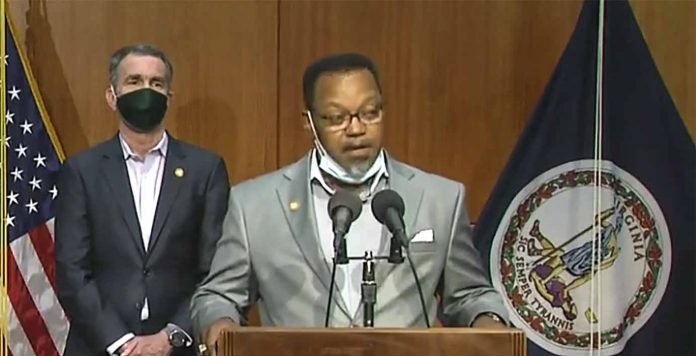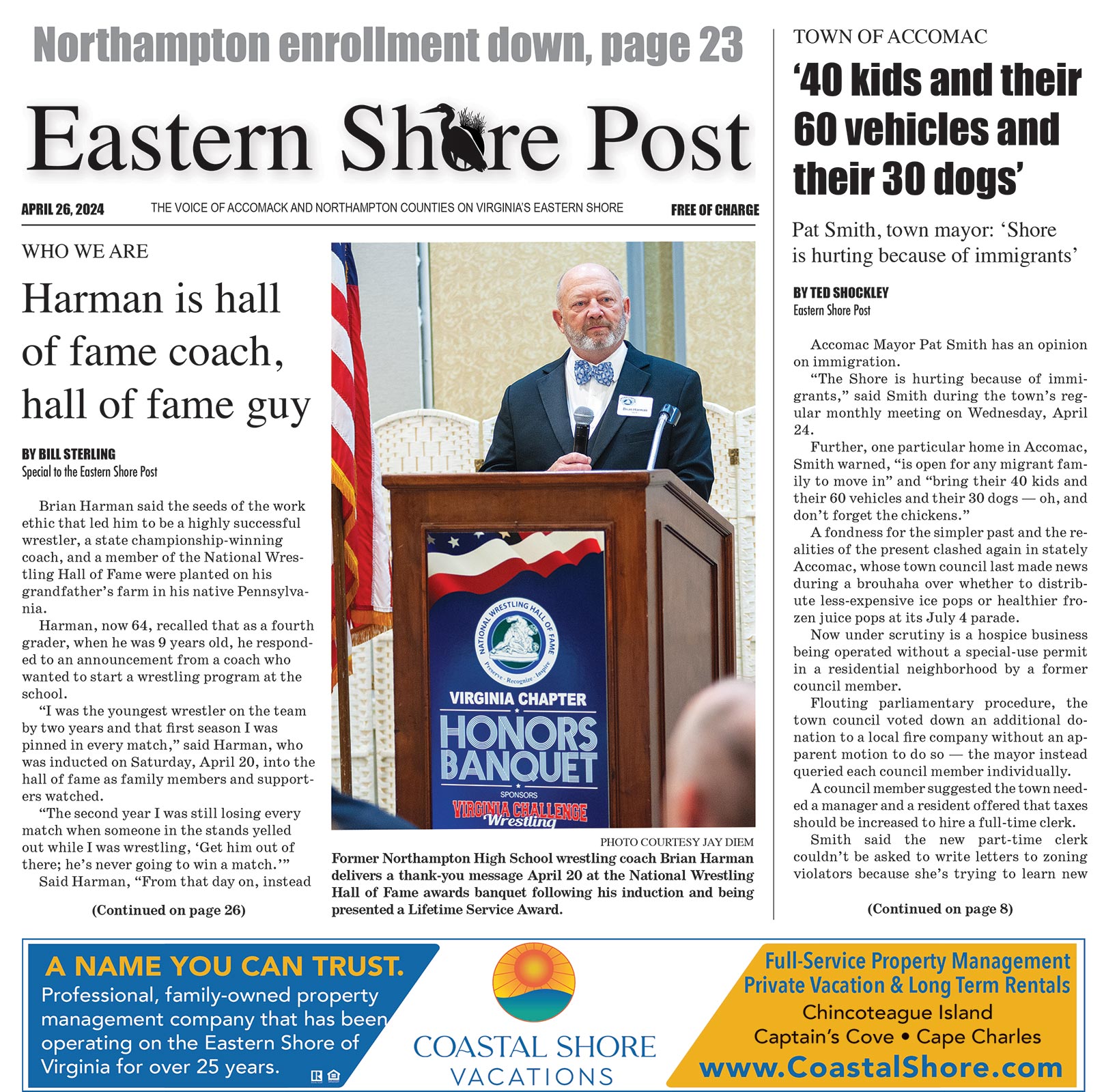
By Carol Vaughn —
Protests and rallies in the aftermath of the death of George Floyd, a black man, at the hands of white police in Minneapolis are not a new phenomenon in the United States, or even on the Eastern Shore, according to Eastern Shore historian Kentoya Downing-Garcia, who teaches U. S. History at Nandua Middle School.
Downing-Garcia, who is black, wrote her 2012 master’s thesis about a race riot in the town of Onancock in 1907. The riot was started by white residents in response to black residents who were beginning to organize to advocate for better wages, with many leaving the area to seek opportunities in cities, resulting in a local labor shortage.
The Onancock riot was among numerous race riots resulting from rising tensions between white and black Americans in the early years of the twentieth century, including in Atlanta, East St. Louis, Omaha, and Chicago, among other cities.
“As a historian, I can lead you to the institutional racism that has been around since 1619…When you look at it, you see that there has always been this really thin line,” Downing-Garcia said.
Her own story reinforces the historical record.
Her grandmother for years was the only black woman to work on the floor of a Parksley store, “and they can tell you some stories about having to go to a restaurant and order their food out of the back of a window.”
Her stepfather was the first African American to desegregate Onancock High School in the early 1970s. Ironically, his name also is George Floyd.
As a black woman who is the mother of two boys, news of the violent death of Floyd and others is emotionally draining, according to Downing-Garcia.
“I will tell you these incidents, these problems — it’s just like, you are having a good day, and then all of a sudden you have these incidents that pop up and that’s all you think about.”
One particularly troubling aspect of some recent rallies elsewhere is the presence among the crowd of agitators there for the purpose of inciting violence.
That, too, is a feature of similar events in the past.
That element “is one piece of history that I have seen that keeps popping back up,” Downing-Garcia said, adding, “I’ve seen in the summer of 1919 riots when I studied them, the Tulsa, Oklahoma (riot) — you will see these agitators and these instigators that are using these few moments to create chaos.”
The difference is that nowadays, people are recording on their smartphones “these agitators and these instigators whose main goal is to cause chaos,” she said.
“What it brings home to me is how little people actually know their history,” especially local history, which ties in to larger movements, Downing-Garcia said.
As the philosopher George Santayana said: “Those who cannot remember the past are condemned to repeat it.”
Downing-Garcia’s advice in the current times is similar: “actually learn facts — do not pick and choose over historical events.”
The unrest surrounding Floyd’s and others’ deaths comes on top of the COVID-19 pandemic, which further exposed systemic racial inequities — for example, black Americans have been taken ill and died at a significantly higher rate than others, including on the Eastern Shore, according to Virginia Department of Health statistics.
For example, of 1,198 COVID-19 cases on the Eastern Shore, 732 were black or African American.
Of 80 hospitalized, 61 were black or African American.
Of 35 deaths, 20 were black or African American.
The pandemic “has been slamming the consequences of inequality and injustices home,” Downing-Garcia said.
She noted it has been around a century since similar waves of civil unrest — 99 years since the Tulsa Race Riot and 101 years since the Red Summer of 1919, when violent riots against black people broke out in more than three dozen cities.
“We are in 2020 and it’s just like we’re fighting the same battles,” she said.
Still, the current protests, hopefully, can be a catalyst for change.
“I am inspired. I see that the waves of protest across the country were representing genuine and legitimate frustration over decades, failure to reform our justice system…and the young people who have been peaceful, courageous, and responsible,” Downing-Garcia said, adding, “I hope this activism doesn’t just stop with this — you know, get involved, not just vote, but learn your local politics, learn your state politics.”


